

Left: northeast corner with plaza side of ball court wall; center and right: Building II, 100 BCE-350 CE; remodelled 500-800 CEThis is a temple platform topped with two sets of five columns. The scapular cornices (here doubled) recur in buildings on the Grand Plaza. Of this molding, Miller says," in its two separate layers, the molding bears a similarity to the symbol for sky, perhaps indicating the generally sacred quality of architecture so delineated" (87). | ||
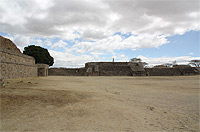
|
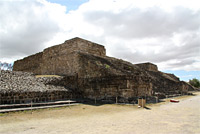
|
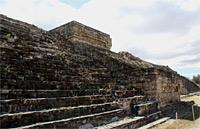
|
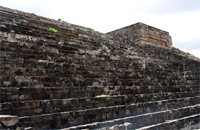
|
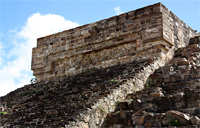
|
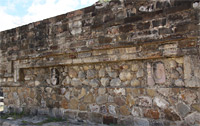
|

|
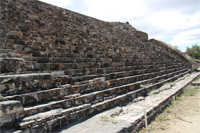
|
Building P, 350-800 CE, with monumental staircaseThis structure, another temple platform, faces the Adoratorio. |
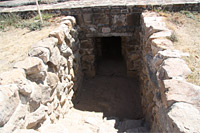
|

|
|
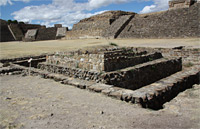
|
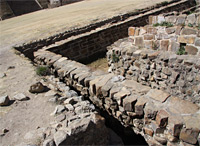
|
The Adoratorio, also called the Sunken Patio, dating to Monte Albán V (or Mixtec period)The famous bat mask of jade was discovered in a burial between the Adoraratio and Building P. |
The Palacio/Palace--also called Building S, 350-800 CEScholars believe this building was used solely as a dwelling--unusual, given the public/ritual nature of the buildings facing the Grand Plaza. It would have been a dwelling for Zapotec nobility and has a sense of privacy since the entrance (with the lintel and jambs still standing) opens into a Z-shaped passage, a blind entrance shielding the inner rooms from sight. | ||
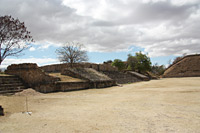
|
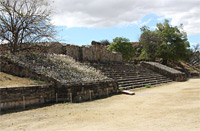
|
Inside, about 12 rooms are built around a courtyard with a small shrine. |
Left and center: the Palace; right: the east side looking back north with Mound Q, an unexcavated temple, in the foreground | ||
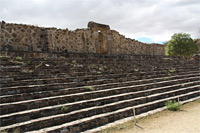
|
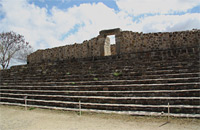
|
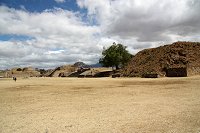
|
 Return to the Monte Albán Index.
Return to the Monte Albán Index.
 Go to the Mexico Index.
Go to the Mexico Index.
 Click here to return to index of art historical sites.
Click here to return to index of art historical sites.
 Click here to return to index of artists and architects.
Click here to return to index of artists and architects.
 Click here to return to chronological index.
Click here to return to chronological index.
 Click here to see the home page of Bluffton University.
Click here to see the home page of Bluffton University.

